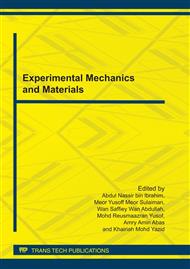p.78
p.85
p.91
p.97
p.104
p.109
p.116
p.123
p.130
Effect of Residual Stresses on Bending Test in Bilayer of SOFC
Abstract:
When to test the failure stress of Solid Oxide Fuel Cell system, bending approach is consider as one of the convenient ways. The failure stresses are calculated by the elasticity multi -layered theory, in which the neutral axis is determined by the mechanical properties of materials and the thickness of the layers. When cooling from the sintered temperature, residual stresses arise in the multi-layered system due to the mismatch of the thermal expansion coefficients, in this case, the thermal elastic theory point out that the neutral axis depends on residual stress. In this paper, the effect of residual stress on the shift of neutral axis and consequently the failure stress of SOFCs presented, the finite element method was also employed to calculate the SOFCs before and after reduction. The results show that the residual stresses has a distribution along the thickness of the layers, the neutral axis also shifts with the residual stress and the external bending moment, when to test and value the bending stress, the shift of neutral axis should be considered.
Info:
Periodical:
Pages:
104-108
Citation:
Online since:
July 2011
Authors:
Price:
Сopyright:
© 2011 Trans Tech Publications Ltd. All Rights Reserved
Share:
Citation:


